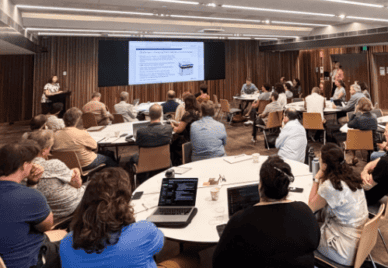
For over 9 years, the ARDC Nectar Research Cloud (Nectar) has been vital for Dr Tom Remenyi’s research to understand the future impacts of climate change.
A Senior Climate Research Fellow at the University of Tasmania’s Climate Futures Group, Dr Remenyi was one of the first researchers in Tasmania to use Nectar when it was launched at the TPAC node in 2014. Since then, he has completed 30 projects using Nectar with partners from industry, state and federal governments, and academia. It has allowed him to analyse big climate datasets to model future impacts of climate change.
So what were some impactful ones that Nectar enabled? And how is Nectar used as a training ground for emerging climate scientists?
Government and Academia Collaborate on Climate and Bushfire Data Analysis

One project Dr Remenyi and colleagues worked on, in collaboration with natural disaster experts in the Tasmanian state government, was the Tasmanian Wilderness World Heritage Area Climate Change and Bushfire Research Initiative.
The outbreak of fires in Tasmanian Wilderness World Heritage Areas in 2015 and 2016 highlighted the need to understand the risk of fire in these areas under future climate scenarios. This would help the Tasmanian government and authorities to better prepare for, and respond to, bushfires in World Heritage Areas.
Dr Remenyi and colleagues provided new and updated decision-making tools to aid the development of the planned burning strategy for the Tasmanian Wilderness World Heritage Area.
Nectar made it easy for Dr Remenyi to collaboratively test data analyses for projecting future bushfires in the Tasmanian Wilderness World Heritage Areas.
“The bushfire research industry has a lot of technically minded people that are doing a lot of modelling, so they want to be able to work with the code.”
Instead of his government partners needing to laboriously download data and software to undertake analysis, Dr Remenyi gave them access to Nectar, where they could easily access what they needed to run transformations and test fire network systems.
The project produced an assessment of bushfire risk across Tasmania, which has influenced bushfire policy and state emergency management policy.
Climate Atlas Shows Australia’s Wine Future
Working with the Australian government statutory authority Wine Australia in another project, Dr Remenyi and colleagues published Australia’s Wine Future: A Climate Atlas.
A world-first, the Atlas details how Australia’s famous wine growing regions will be forced to adapt to climate change in the next 80 years. It describes trends for growing conditions under future climate conditions, including changes in temperature, rainfall, evaporation, and heat and cold extremes in every wine region in Australia until 2100.
Throughout the 4-year project, the data analysis and modelling were conducted on none other than Nectar.
Winegrowers are using the Atlas to understand the future climate of their region and make changes to how they manage their vines. They are seeking new soil and vine management and irrigation techniques, and some may even swap varieties to suit their changing climate.
A Valuable Service for Upskilling the Next Generation of Researchers
Nectar, said Dr Remenyi, has been the ideal platform for PhD and early career researchers to learn the digital research skills they need to conduct cutting-edge research.
“One thing I’ve loved about Nectar is it allows people to learn things that can match their capacity,” said Dr Remenyi.
“There’s so much to learn, and there’s such a big gap between working on your laptop or home computer and using a supercomputer – and Nectar fills that gap perfectly. They need something that can work as if you’re on a laptop, but has the grunt of a bigger machine. Nectar allows for this transition.”
Over the past 9 years, Dr Remenyi and his colleagues have trained dozens of higher-degree researchers (HDRs) and early-career researchers (ECRs) using Nectar, which they see as a learning space where HDRs and ECRs can develop their computational skills.
“By the time you start getting to the top end of what Nectar offers, you’re already doing multi-threading, and you are then set to ask NCI (the National Computational Infrastructure) for time on a supercomputer. You have built someone up to a point where they at least know why they have to do it this way.”
Learn more about the ARDC Nectar Research Cloud.
The ARDC is funded through the National Collaborative Research Infrastructure Strategy (NCRIS) to support national digital research infrastructure for Australian researchers.
Author
Reviewed by
Categories
Related Program
Related News & Events
Related Case Studies






